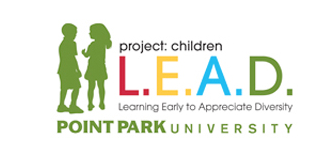Lesson 1: AccessABILITY Diversity Integrated Lesson Series

Lesson: AccessABILITY
Teacher: Dr. Connie Craven
Project Children L.E.A.D. Director: Dr. Vincenne Revilla Beltran
Subject Area: Diversity, Art, Communications and Physical Education
Grade level:Elementary (Grades 2-4)
Length of Lesson: 80 to 320 minutes
Download a printable version of the Lesson: AccessABILITY in PDF format (requires Adobe Reader)
Description of the Lesson:
In this lesson the teacher will develop explanations of certain disabilities represented by children with disabling conditions in the class. Once the approval and help of the children with disabilities and their families is obtained, the teacher can plan the lesson around the child and his/her planned contribution to understanding his/her condition. For instance, a child who is deaf can eventually teach words or phrases in sign language to the other children. A child who is in a wheelchair can teach development of upper body strength through exercise to his/her classmates. This same child can teach others about accessibility of drinking fountains, doors, light switches, and materials for individuals who must use a wheelchair.
Resources:
The resources will depend on the individual handicapping conditions that are explored. However, art supplies and space for physical activities and presentations will be necessary. Sign language books or physical education videos may be useful, as well as obtaining speakers from the community, families, and/or advocacy groups. For this lesson, sensitivity must be required and demonstrated. A teacher must understand the point of view of the children with the disabilities, working closely with them and their families.
Basis for the Lesson:
It is not unusual for children to ask question such as, "Why does Andre come to school in a wheelchair? Why does the aide talk to Leah with her hands in Sign Language?" Children begin to explore the range of physical differences and disabilities early in their educational careers. In grades three and four, they are able to understand simplified scientific explanations for physical differences and disabilities. Moreover, children who are exposed to a range of disabilities and equipped to understand them through classroom interaction, develop the appreciation of the strengths, abilities, and contributions of their peers. The children with disabilities can demonstrate their special understandings to the rest of their classmates.
Academic Standards
This lesson incorporates the Pennsylvania Standards for Writing, 1.4.3C: Write an opinion and support it with facts, and the Pennsylvania Standards for Speaking and Listening: 1.6.3A,B and 1.7.3A, as well, as the National Standards for Physical Education: To know the implications of the benefits of involvement in physical activities. The World Association of Persons with Disabilities (WAPD) recommends art and writing as ways of including students with physical disabilities in the classroom activities. Included in this lesson are the thematic topic of Diversity as developed at the laboratory school of Point Park University: Getting to Know You, I am Special, You are Special, and Physical Differences.
Scope and Sequence/Activities Time: 80 to 320 minutes. Time is dependent on the number of students with disabilities that will participate in the project.
1. Identify the physical disabilities that will be covered in the unit.
2. Collaborate with the children who are disabled and their families to:
A. Tell their stories,
B. Explain their disabilities,
C. Invite speakers who are expert in the field of the study.
3. Develop questions: What is a disability? How do we refer to others who have the disability? What is the cause? What are the adaptations? What must an individual overcome to function? Are there special things a person with a particular disability must learn?
4. Students will complete an art project depicting one word or one phrase regarding the disability.
If it is deafness, then the deaf child can teach each of the other children a word in sign language that can be used as a subject for an art project and a presentation. If a child is using a wheelchair, he/she can teach a physical education routine to the class to develop upper body strength. The use of music in this part of the exercise would be helpful to remember the routine and practice it.
5. The class will write a paragraph giving their opinion about the use of sign language or the
value of exercise in overcoming physical conditions and maintaining health, etc.
6. Papers will be read by the writers, and art work will be displayed.
Enduring Understanding: Develop understanding and appreciation of physical differences and individuals with disabilities, physical basis for the disability and the means used to overcome the condition. This lesson allows the children with disabilities to be able to lead their class, to be highlighted as leaders and people who have learned ACCESS. The entire class along with learning communications skills and/or physical education routines will also be involved in an opportunity for collaboration with peers who are different than they are.
Property may be destroyed. Money may lose
its purchasing power. But character, health,
knowledge and good judgment always will be in
demand under all conditions.
-Roger Babson

